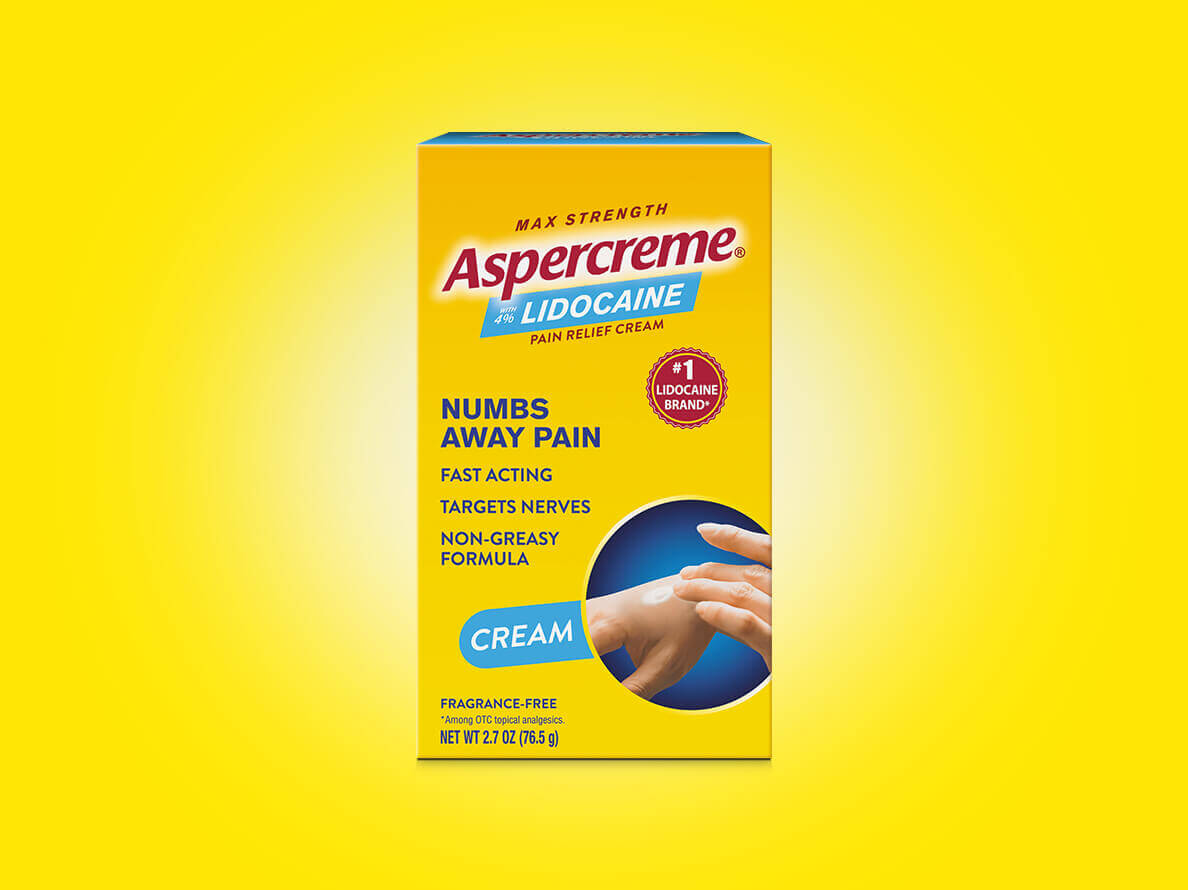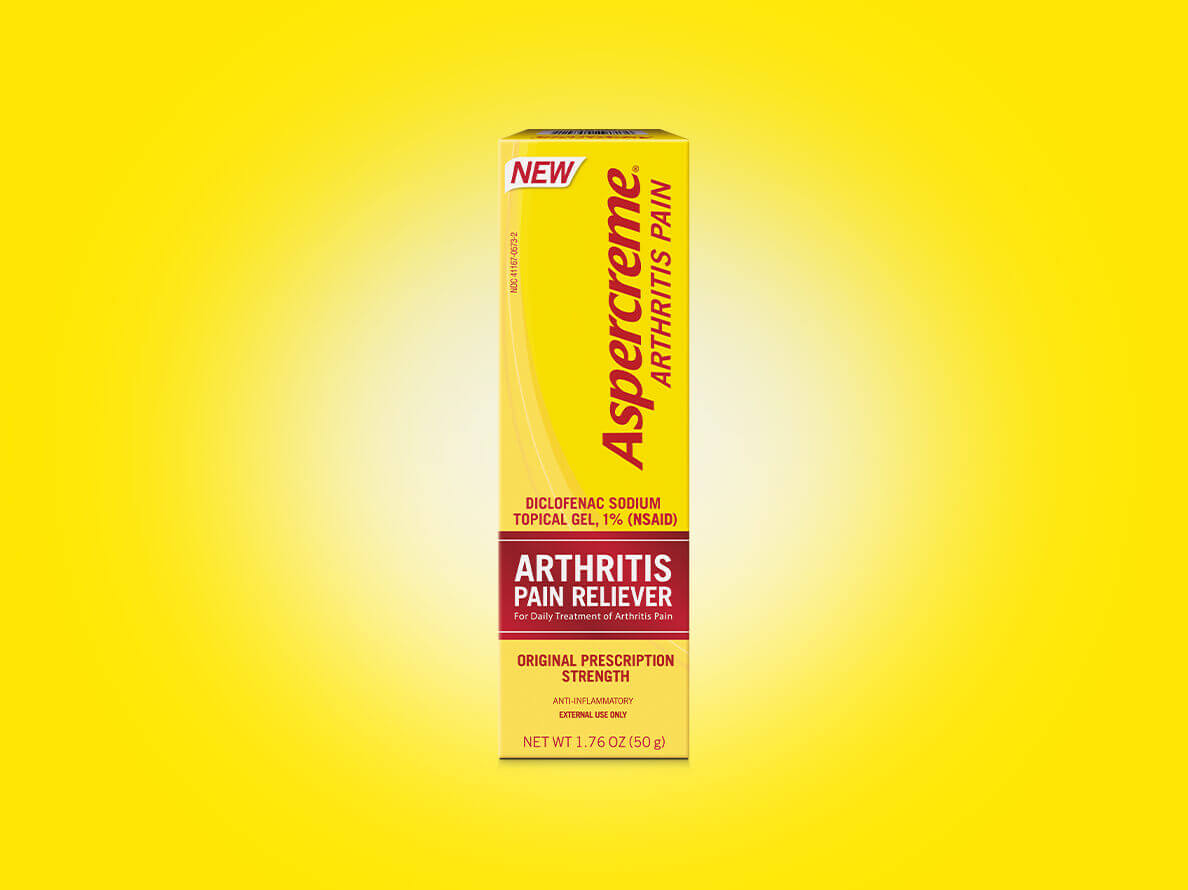.png)
DIFFERENT TYPES OF PAIN
Everybody experiences pain differently.1 Aching joints and sore muscles are a part of life, but there are things we can do to keep pain from slowing us down. Understanding the different types of pain, as well as what causes pain, will help inform the best way to relieve it.
On This Page You Will Learn About:
Navigate Your Pain
.jpg)
Pain is believed to be made up of two complementary aspects: one is a localized sensation in a specific body part; the other is an unpleasant feeling that accompanies actions taken to alleviate the experience.1
It starts with specific pain receptors, which are nerve endings that only respond to physical damage or the potential for damage. That stimulus travels to the spinal cord by a nociceptor, which acts as a pain relay. From there, signals are sent to your brain, which helps you process and react to the pain.1
It's also important to recognize the difference between acute and chronic pain. Acute pain is caused by a specific injury or illness, and diminishes with healing. With chronic pain, if it's associated with disease or injury, it can sometimes outlast the healing cycle and have no clear end.2
Acute pain is usually addressed by easing the underlying cause and interrupting the nociceptive signals. Treatment for chronic pain requires a multidisciplinary approach involving multiple therapeutic methods.2 If you are experiencing ongoing pain, speak to your healthcare professional.
Some Common Causes Of Pain
From stubbing your toe on a coffee table to straining your back lifting a heavy object, everyday pain happens. Here is a look at some of the most common causes of everyday pain.
Injury
Bumps And Bruises
You get bruises when small blood vessels near the skin’s surface are broken by impact or injury. The blood leaks and creates that familiar black-and-blue bruise. After a couple of days the blood is usually reabsorbed and the mark disappears. As we get older, however, our skin becomes thinner and loses some of the protective layer that helps cushion blood vessels and prevent bruising.3
Sprain
You get a sprain when ligaments — which connect bones to bones — are stretched or torn. You could feel pain, notice swelling or bruising, or experience limited mobility.4 Treat minor sprains with rest, ice, compression, and elevation. Severe sprains sometimes require surgery to repair torn ligaments. See a doctor if you can’t move or bear weight, experience excessive pain, or feel numbness in the injured area.4
Strain
Strain describes an injury to a muscle or to the band of tissue that attaches a muscle to a bone. Similar to a sprain, you can help prevent a strain with regular stretching as well as strengthening exercises.4
Muscle Soreness
Physical activity like exercise can put stress on your muscles that cause soreness. Professional athletes spend countless hours training to become the best. But if your training program is less than professional grade, you'll want to take it slow, warm up thoroughly, and ease into your longer workouts.5
Other ways to avoid muscle soreness include:5
Stretch after you work or play
Remain active; sometimes it helps to train through discomfort
Use ice to reduce swelling and inflammation
Use heat to ease muscle strain
Take a day or two off if it feels worse
Arthritis And Joint Pain
Arthritis pain affects millions of people in the US – nearly one in four adults. The most common form of arthritis is osteoarthritis in the knee and hip.6
Physical activity can help reduce arthritis pain, and greatly enhance the arthritis sufferer's quality of life. Walking, biking, and swimming are all effective ways to ease arthritis pain. Regular exercise has other benefits as well, including reduced anxiety and improvements in both mood and physical function.6
Ways To Ease Your Pain
Lifestyle7
Take care of yourself: get regular exercise, eat a healthy diet, and get plenty of sleep
Try massage: it's a proven way to relieve stress and muscle tension
Incorporate acupuncture, herbal treatments, meditation, or music therapy into your wellness routine
Thermal Treatment7
Cold can numb pain and help reduce swelling. Keep an ice pack on hand, or use a bag of frozen vegetables. You can also submerge the affected area in ice water.
Heat can be used as a muscle relaxer, which contributes to pain relief. It can also increase blood flow to the injured area, which promotes healing. Use a heating pad or take a warm bath.
Which Aspercreme® Products Can Help

Aspercreme® products are carefully made to provide temporary pain relief so you can keep doing the activities you love. That starts with effective ingredients. Then they’re packaged and formulated into flexible, convenient variations to make them easy and pleasant to use.
For Arthritis
For Joint Pain
Don’t Let Pain Get In Your Way
Aspercreme® offers a full range of innovative, topical solutions that provide targeted relief. All to help you put your pain in the background.
Enjoy doing all the things you love, and make the most of each day, without worrying about pain or discomfort.
RELATED PRODUCTS
References
1. NCBI, editors. The Anatomy and Physiology of Pain, NCBI (ncbi.nim.nih.gov), 1987.
2. K P Grichnik, F M Ferrante, editors. The difference between acute and chronic pain, NCBI/National Library of Medicine (pubmed.ncbi.nim.nih.gov), 1991.
3. Mayo Clinic Staff, editors. Easy bruising: Why does it happen, Mayo Clinic (mayoclinic.org), March 11, 2020.
4. Mayo Clinic Staff, editors. Sprains, Mayo Clinic (mayoclinic.org), September 25, 2020.
5. Jason Howland, editor. Managing muscle soreness, Mayo Clinic (mayoclinic.org), February 2, 2018.
6. Centers for Disease Control and Prevention (CDC), editors. Joint Pain and Arthritis, CDC (cdc.gov), May 22, 2020.
7. Mayo Clinic Staff, editors. Self-care approaches to treating pain, Mayo Clinic (mayoclinic.org), October 31, 2017.
.jpg)
.jpg)
%20(1).jpg)
.png)
.png)